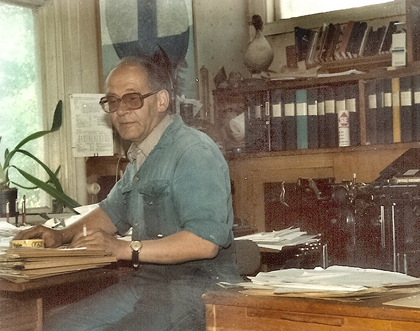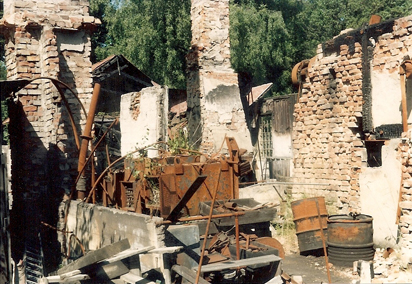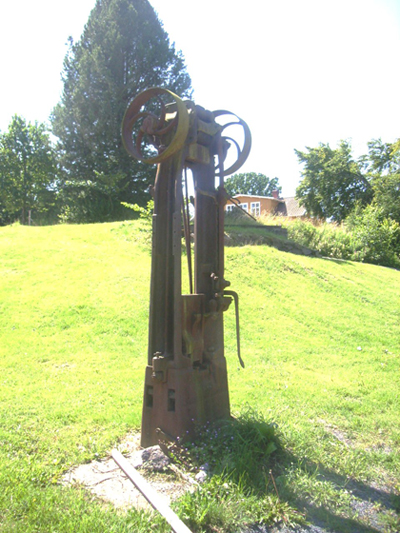Harald Stockheden (1924–1996) was a chemist and a former employee of Swedish Match in Jönköping. In 1971, he married John Lund’s daughter Susanna and settled in Susegård, an Art Nouveau house in Horstorp, about one kilometer east of the factory. Susanna had grown up attending a private school in Jönköping, the local girls’ school and the Per Brahe upper secondary school. She also worked for a while at Swedish Match in Jönköping.
 |
| Harald Stockheden. Photo by Göran Nel, 1983. |
The company under Harald Stockheden
The closure of Swedish Match in Jönköping in 1975 meant that Harald was able to take over the key manufacture, which he did, with six employees, in 1976. On the Maundy Thursday of that year, the oldest part of the factory was devastated by fire. However, the buildings, machines and furnishings were insured and could be replaced.
 |
| After the 1976 fire. Photo by Göran Nel. |
The 1981 catalogue was the last. It was given a brown cover and, like that of 1933, was in a loose-leaf design using offset print on glossy paper. Most of the models from the earlier catalogue were still available, with a slight modernization of many of the designs. In addition, the blanks for safe and cash-box keys had double bits.
In 1984, the factory had four employees and produced some 200,000 keys. Its annual sales reached about SEK 500,000 (USD 56,000 at year-end 1984).
Closure
Harald and Susanna Stockheden were the factory’s last owners. Harald finally closed it down in 1989 when he decided to retire.
That year, Aledal was acquired by wholesaler Prodib AB. The purchase included machines, tools, and the rights to the name Aledals Nyckelfabrik. Prodib closed the factory with immediate effect. The machines were sold and some of the tools were sent to an Italian factory called Silca.
The plant was then sold on to Jan and Berit Graab, who demolished all the industrial buildings the following year. All that remains today are the houses, the power plant and a couple of small storage buildings along the river.
As a memorial to the company’s 120 years of business, one of its most important machines, the drop forge with the 500 kg hammer, was left behind. It now stands alone on the site of the old factory building.
Aledal at the Museum of Technology
In 1974, the Stockholm Museum of Technology mounted an exhibition on the Aledal factory. The display included photographs of the factory’s interior and exterior courtesy of the Bankeryd Photography Club. Mainly, the exhibition was about the workers, their workplaces and the machines, but it also included keys and blanks, keys in different stages of manufacture, weapons and catalogues. Much of the material was later presented to the museum as a gift.
Thanks
I would like to extend a well-deserved thanks to Susanna Stockheden, who replied knowledgeably and willingly to my questions, and who gave me access to the family’s private documents, photos and the company archives.
References
Interviews with Susanna Stockheden, 2006–2007.
Hellberg, Knut. Järnet och smedernas Eskilstuna, part 2. Eskilstuna 1938.
Olsson, Sven-Olof. Husqvarna arbetare 1850–1900. Jönköping 1983.
Schnell, Ivar. Eskilstuna. En svensk industristad med anor. Eskilstuna 1939.
 |
| All that remains is a solitary drop hammer on the now deserted factory grounds. Photo by the author. |